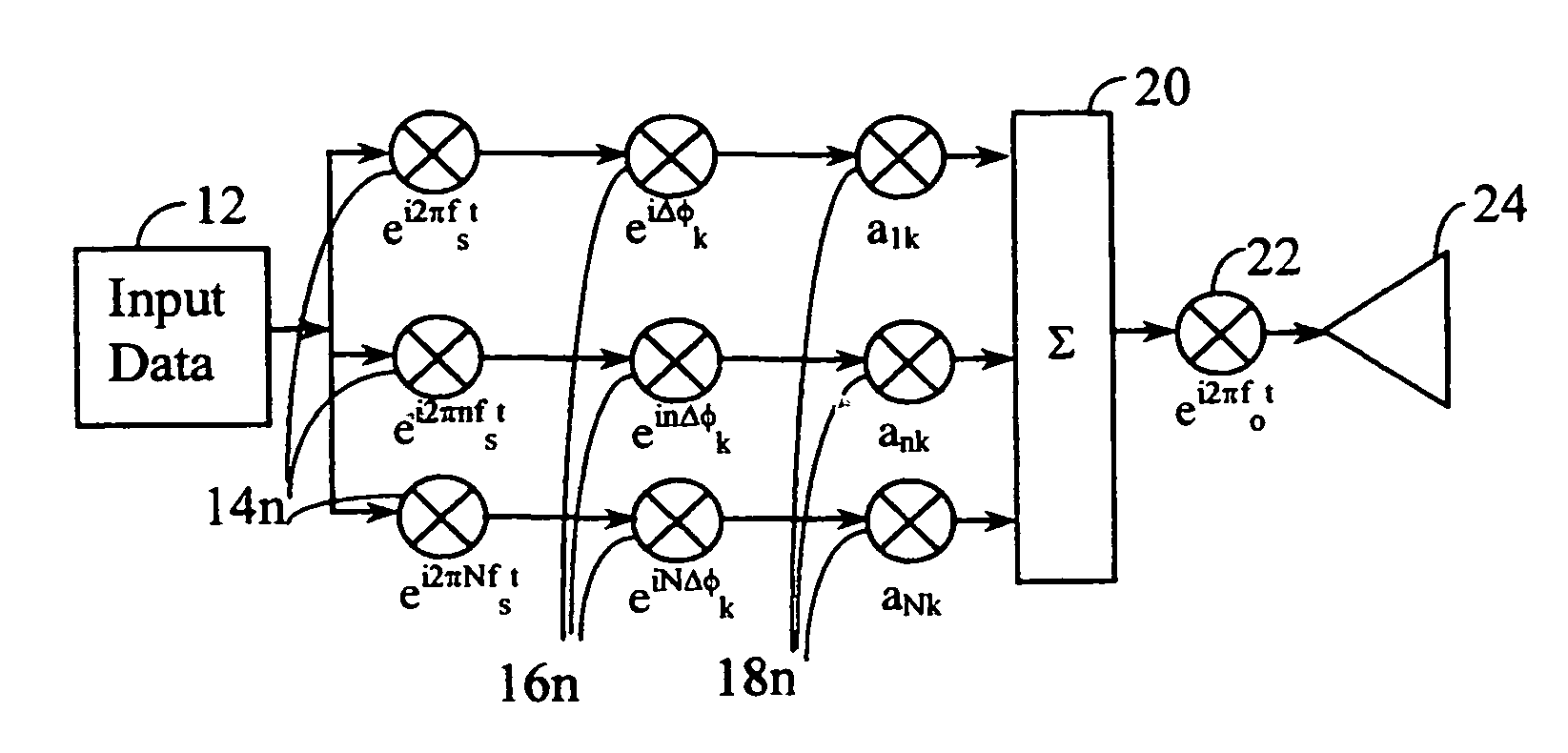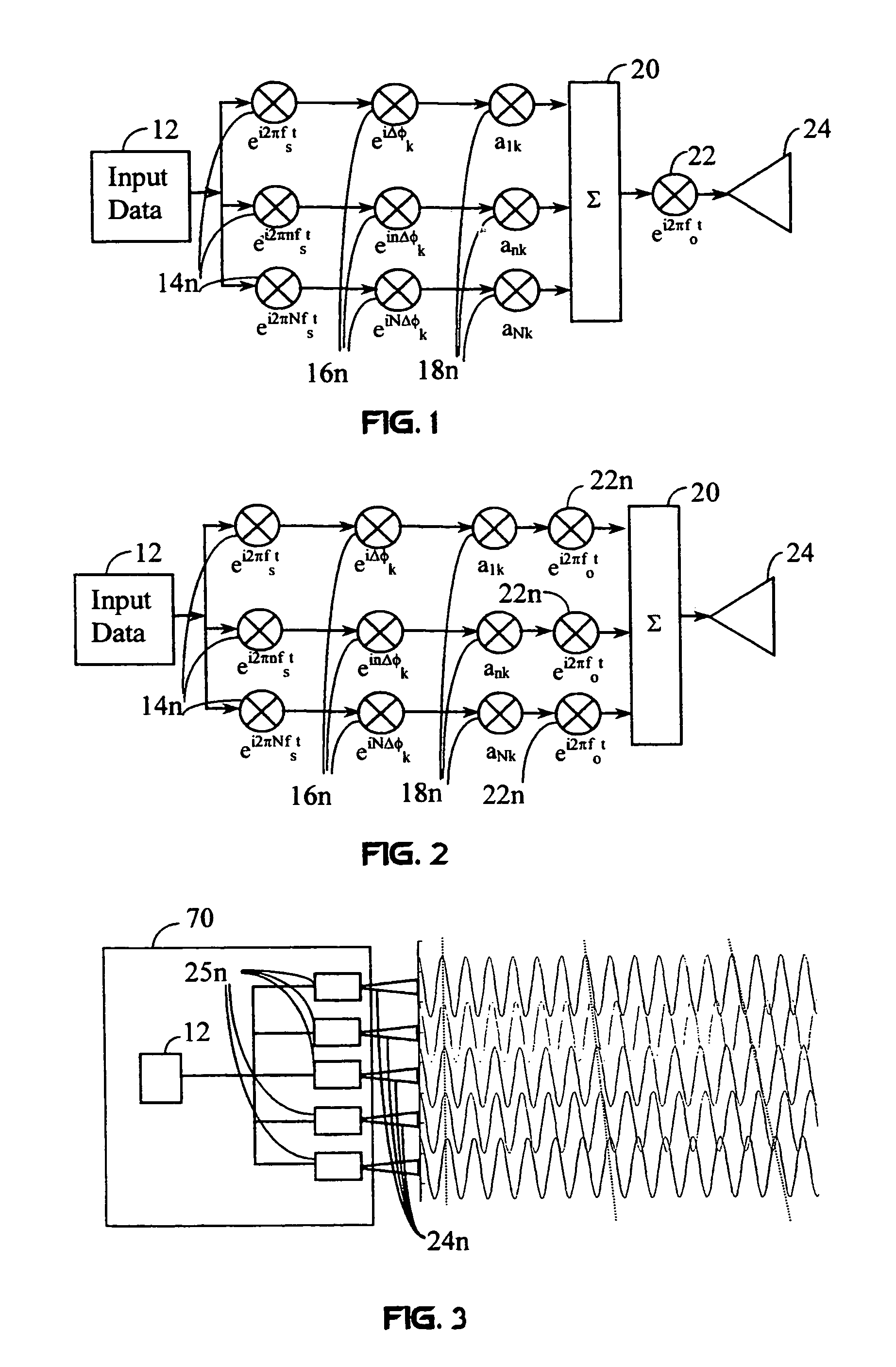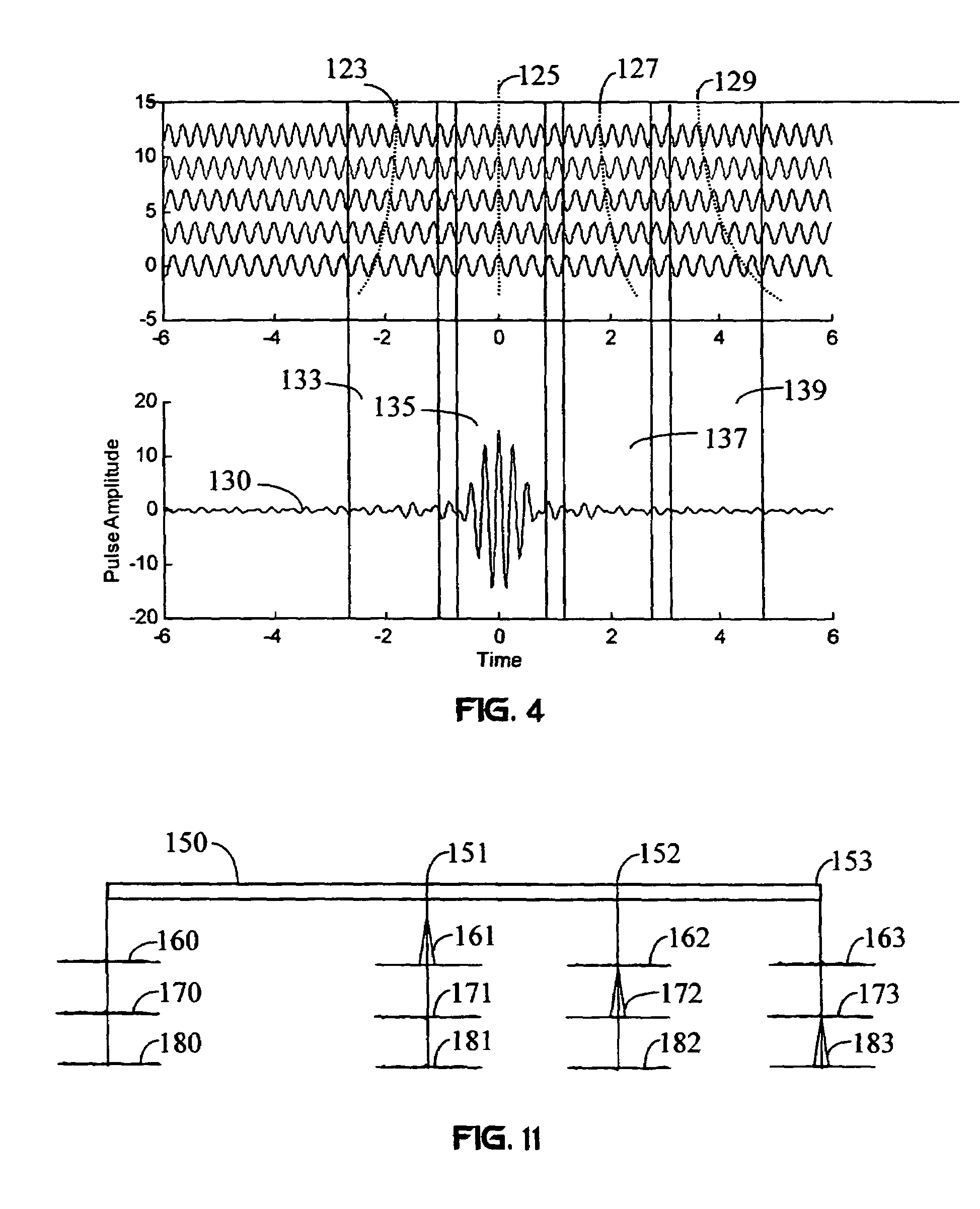Multiple access method and system
a multi-access method and spreadspectrum technology, applied in multiplex communication, using reradiation, instruments, etc., can solve the problems that conventional radio receivers cannot detect these signals, and achieve the effects of reducing the effect of multi-path fading and interference, reducing the required transmission power, and reducing interference to other systems
- Summary
- Abstract
- Description
- Claims
- Application Information
AI Technical Summary
Benefits of technology
Problems solved by technology
Method used
Image
Examples
Embodiment Construction
[0041]FIG. 1 shows a flow diagram of a CIMA transmitter that converts a baseband information signal for a single user k to a CIMA signal for transmission. Data received from an input data source 12 modulates a number N of CIMA carriers, which have different carrier frequencies. This modulation occurs at a plurality of carrier mixers 14n. In this case, the frequencies of the CIMA signals are incrementally spaced by a shift frequency fs. However, non-uniform spacing of the frequencies may also be used to achieve specific benefits described in U.S. patent application Ser. No. 09 / 022,950, which is incorporated herein by reference. The carrier frequencies are typically chosen to be orthogonal to each other: ∫0TCcos(ωit+ϕi)cos(ωjt+ϕj)ⅆt=0
where Tc is the chip duration, ωi and ωj are the ith and jth carrier frequencies, and φi and φj are arbitrary phases. A signal in the jth frequency band does not cause interference in the ith frequency band. However, orthogonality of the waveforms...
PUM
 Login to View More
Login to View More Abstract
Description
Claims
Application Information
 Login to View More
Login to View More - R&D
- Intellectual Property
- Life Sciences
- Materials
- Tech Scout
- Unparalleled Data Quality
- Higher Quality Content
- 60% Fewer Hallucinations
Browse by: Latest US Patents, China's latest patents, Technical Efficacy Thesaurus, Application Domain, Technology Topic, Popular Technical Reports.
© 2025 PatSnap. All rights reserved.Legal|Privacy policy|Modern Slavery Act Transparency Statement|Sitemap|About US| Contact US: help@patsnap.com



